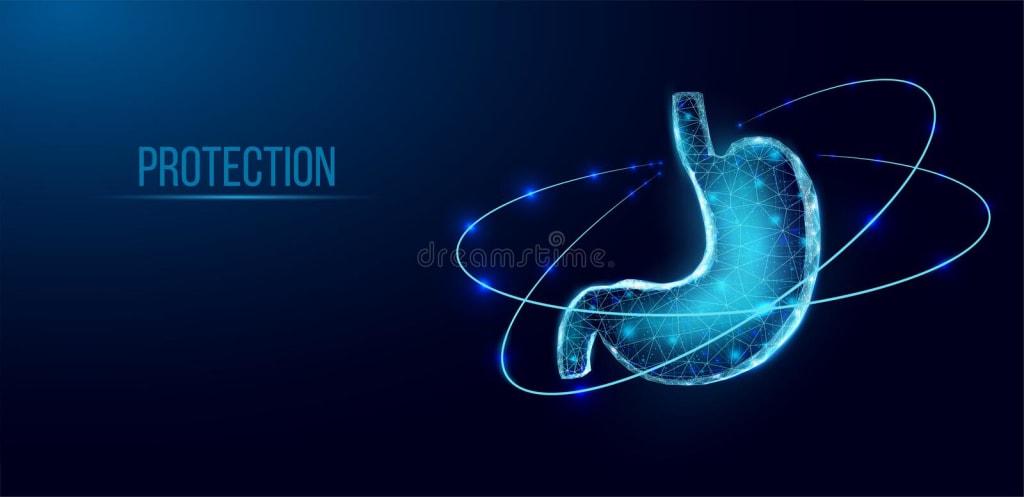What details you wanna know about your Stomach?
This is a detailed description of an organ inside you that helps you eat more junk.

"Oh that's a J shaped structure with two tubes running in and out of it. It's located inside the abdomen which means, it's part of the digestive system," a junior resident doctor was rehearsing for his test while observing a GIT section on the cadaver.
"How stupid can a House Officer be, who doesn't even know that organ he's pointing to is the Stomach!"
"Jake speak low. We don't know how much he knows right now. Let's take his test. And please make it a friendly session."
"Fine! How much burden I feel as a Junior Doctor."
"Jarvis, this is an organ called the Stomach whose function is to accumulate and digest food. You see this attachment above. This is called the oesophagus and this tube running downwards is the Duodenum."
"Can you name it's location properly? In which abdominal region it lies?"
"Anatomical position you mean? It's in the Epigastric and Umbilical regions."
"Yeah right! How many parts does a stomach have?
"It has four parts; Cardia, Fundus, Body and Pylorus. I can explain the details if you want me to. Cardia is the part where cardial orifice is present at its opening at T11 level. Fundus is the part left of Cardia superiorly on the stomach, which often gets dilated due to gas getting filled inside it. A cardial notch is present between the oesophagus and fundus. Body is the large central portion inferior to Fundus...."
"And next we have the Pylorus which connects the stomach to the duodenum. It is divided into Pyloric Antrum, Pyloric Canal and Pyloric Sphincter. It is a funnel shaped region."
"Yeah and Pyloric Sphincter is a thickening of circular layer of smooth muscles that control discharge of the stomach contents into duodenum."
"What about the lesser and Greater Curvatures?"
"The medial and lateral borders of the stomach are curved to form the lesser and Greater Curvatures.
Lesser curvature forms the shorter, medial surface of the stomach. There's an angular notch present inferiorly on the lesser curvature that indicates the junction of body of stomach and pyloric region.
And Greater Curvature forms the long lateral border of the stomach. It arises at the cardiac notch, arches backward and passes inferiorly to the left. It curves to the right to reach the Pyloric Antrum."
"That's Good. You know much stuff. But show me the relations of the stomach in this cadaver."
"Okay sure. So superiorly this is an oesophagus. This flap here superiorly over the stomach is the left dome of the diaphragm. Anteriorly, on the front of stomach we have diaphragm again, Greater omentum hanging down from Curvature, this is the left lobe of liver here, and the gall bladder."
"Aren't you forgetting the walls?"
"Oh Sorry! Anterior abdominal wall on the Anterior side and posterior abdominal wall on the posterior side of the stomach."
"Okay. Good enough. Let me show you the structures posterior to Stomach."
Glenn gently slides the stomach to its side inside the cadaver, the dead body used in Medical schools. She exposed the structures beneath it, as in posterior to the stomach in medical terminology. It had a kidney behind it along with it's adrenal gland superior to the kidney, a pancreas stuck along, she pointed out the spleen along with its splenic artery and then she pointed out the part of intestines, the transverse mesocolon. Then last but not the least, she showed Jarvis the lesser sac, the last of structures present on the posterior side of stomach.
"That's Great! Thank you."
"Hey just stop this thanking session and show me the Omentums," Jake blurted out.
"Easy Jake! He knows much about the organ."
"Yes Sir. I'll explain. There are two Omentums, the greater and lesser omenta," he picked out a flap of sheet covering the stomach around the lesser curvature and lifted it up with the forceps, "this is the lesser omentum, which gets attached to the liver. Its main function is to join the stomach and duodenum to the liver."
Jarvis after telling about the lesser omentum, then pointed out to a greater peritoneal fold over the greater curvature, "this is the Greater omentum and it folds back upon itself and gets attached to the transverse colon. Greater omentum has many lymph nodes and hence plays a role in GIT immunity from which intraperitoneal infections don't spread out in a large proportions."
"Do you know which artery and nerve supplies the stomach?"
"Yes Sir. The arterial supply to the stomach comes from the Celiac Trunk and it's branches. Right gastric, left gastric, plus right and left gastro-omental arteries supply it. The veins have the same names. The right and left gastric veins drain into the hepatic portal vein while the short gastric vein, alongwith right and left gastro-omental veins drain into superior mesenteric vein."
"Take a break Jarvis. I'll explain the nerve supply. Autonomic nervous system supplies the stomach through parasympathetic and sympathetic innervation. Parasympathetic nerve supply is derived from the vagus nerve and sympathetic nerve supply arises from T6-T9 spinal cord segments and passes to the coeliac plexus via greater splanchnic nerve. You got this?"
"Yeah totally. Parasympathetic from vagus nerve and sympathetic from T6-T9 and greater splanchnic nerve. Can you brief me about the lymphatics too?"
"Of course! The gastric lymphatic vessels travel with the arteries alongside the Curvatures. Lymph drains into the gastric and gastro-omental lymph nodes found at the curvatures. Efferent lymphatic vessels from these nodes connect to coeliac lymph nodes present on posterior abdominal wall."
"Now Jarvis, tell me one thing more. If a patient comes to you with a condition of the stomach. What possible conditions could there be?"
"Sir, the disorders most commonly related to stomach are hiatal hernia and gastro-oesophageal reflux disease. Hiatus hernia occurs when a part of stomach slides into the chest through oesophageal hiatus in the diaphragm. Gastro-oesophageal reflux disease is a digestive disorder affecting the lower oesophageal sphincter, which is present on the lower part of oesophagus where food enters stomach."
"Great! You're good to join the gastroenterology department. Welcome to Harvard!"
"Thanks Sir!"
About the Creator
Syeda Ayesha Arshad
Ayesha, a Medical Student & Wattpad Ambassador from Pakistan, a Content writer, interested in writing fiction stories ranging from Horror & Mystery to epic adventures & non-fiction on Trendy topics. Go enjoy the stories and articles!






Comments
There are no comments for this story
Be the first to respond and start the conversation.